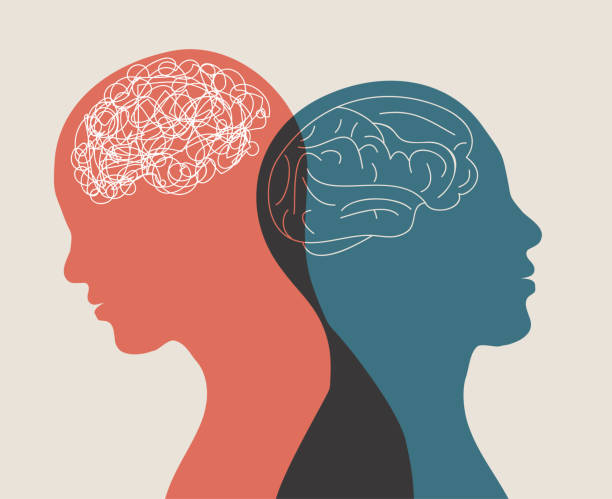Introduction
In an era where information is disseminated instantaneously, media coverage plays a pivotal role in shaping public perception, especially during conflicts. The India-Pakistan conflict, particularly over the Kashmir region, has been a focal point for media narratives that influence emotions, opinions, and behaviors.
Read More- Mental Health and Well-Being
The Role of Media in Conflict Narratives
Media outlets often serve as the primary source of information during conflicts, framing events in ways that can either escalate tensions or promote understanding. The framing theory suggests that the way information is presented influences audience interpretation (Entman, 1993). In the context of the India-Pakistan conflict, media narratives have sometimes been criticized for being nationalistic and sensationalist, potentially exacerbating hostilities.
For instance, during the 2019 Pulwama attack and the subsequent Balakot airstrikes, Indian and Pakistani media outlets presented divergent narratives, each portraying their nation as justified and the other as the aggressor (Sreedharan, 2009). Such polarized reporting can reinforce in-group biases and hinder objective understanding.
Psychological Effects on the Public
The psychological effects of this on the public includes-
1. Anxiety and Fear
Continuous exposure to conflict-related news can lead to heightened anxiety and fear among the public. The concept of “mean world syndrome,” introduced by Gerbner and Gross (1976), posits that heavy consumption of violent media content can make viewers perceive the world as more dangerous than it is. In the case of the India-Pakistan conflict, relentless coverage of military actions, threats, and casualties can instill a pervasive sense of insecurity.

A study by Sharma (2025) highlighted that individuals exposed to constant media coverage of the conflict reported increased stress levels, sleep disturbances, and a sense of helplessness. This is particularly concerning for individuals residing in border areas, who may already be dealing with the direct consequences of the conflict.
2. Misinformation and Its Consequences
The rise of social media has amplified the spread of misinformation during conflicts. False narratives, doctored images, and unverified reports can quickly go viral, influencing public opinion and potentially inciting violence. For example, during heightened tensions, fake news about attacks or provocations can lead to panic, retaliatory actions, or communal unrest (Chaturvedi, 2019).

The psychological impact of misinformation includes confusion, mistrust, and increased polarization. Individuals may find it challenging to discern truth from falsehood, leading to cognitive dissonance and stress. Moreover, repeated exposure to conflicting narratives can result in desensitization or apathy towards the conflict.
3. Impact on Children and Adolescents
Children and adolescents are particularly vulnerable to the psychological effects of media coverage during conflicts. Exposure to violent imagery and alarming news can lead to fear, anxiety, and behavioral issues. A study by Bhat et al. (2020) found that adolescents in conflict zones who consumed high levels of conflict-related media content exhibited higher levels of post-traumatic stress symptoms.

Furthermore, the portrayal of the “enemy” in media narratives can influence the development of prejudices and stereotypes among young audiences, potentially perpetuating cycles of animosity.
The Role of Media Literacy
Enhancing media literacy is crucial in mitigating the psychological impact of conflict-related media coverage. Educating the public on how to critically evaluate news sources, identify biases, and verify information can empower individuals to make informed judgments. Programs aimed at promoting media literacy have shown promise in reducing susceptibility to misinformation and fostering resilience against fear-inducing narratives (Potter, 2013).
Incorporating media literacy into educational curricula, community workshops, and public awareness campaigns can equip individuals with the tools to navigate the complex media landscape during conflicts.
Ethical Responsibilities of Media Outlets
Media organizations bear a significant ethical responsibility in their coverage of conflicts. Adhering to principles of accuracy, impartiality, and sensitivity can help prevent the exacerbation of tensions and the psychological distress of audiences. Journalists and editors must be cautious in their language, avoid sensationalism, and provide context to avoid misinterpretation.
Collaborative efforts between media outlets, mental health professionals, and conflict resolution experts can lead to the development of guidelines that prioritize the psychological well-being of the public while maintaining journalistic integrity.
Conclusion
The media’s portrayal of the India-Pakistan conflict has profound psychological implications for the public. From inducing anxiety and fear to spreading misinformation, media narratives can shape perceptions and emotions in significant ways. By promoting media literacy, adhering to ethical reporting standards, and fostering critical engagement with media content, it is possible to mitigate these psychological impacts and contribute to a more informed and resilient society.
References
Bhat, R. M., & Rangaiah, B. (2015). Exposure to armed conflict and prevalence of posttraumatic stress symptoms among young adults in Kashmir, India. Journal of Aggression, Maltreatment & Trauma, 24(7), 740–752. https://doi.org/10.1080/10926771.2015.1062449
Chaturvedi, A. (2019). Fake news & misinformation on Indo-Pak tension flood the social media. The Economic Times. Retrieved from https://economictimes.indiatimes.com/news/politics-and-nation/fake-news-misinformation-on-indo-pak-tension-flood-the-social-media/articleshow/68220293.cms
Entman, R. M. (1993). Framing: Toward clarification of a fractured paradigm. Journal of Communication, 43(4), 51–58. https://doi.org/10.1111/j.1460-2466.1993.tb01304.x
Gerbner, G., & Gross, L. (1976). Living with television: The violence profile. Journal of Communication, 26(2), 172–199. https://doi.org/10.1111/j.1460-2466.1976.tb01397.x
Potter, W. J. (2013). Media literacy. Sage Publications. https://doi.org/10.1002/9781405165518.wbeosm064.pub2
Sharma, S. (2025). Doomscrolling: Indo-Pak tensions take toll on mental health. The Tribune India. Retrieved from https://www.tribuneindia.com/news/delhi/doomscrolling-indo-pak-tensions-take-toll-on-mental-health-2/
Sreedharan, C. (2009). Reporting Kashmir: An analysis of the conflict coverage in Indian and Pakistani newspapers. Doctoral thesis, Bournemouth University. https://eprints.bournemouth.ac.uk/17116/
Subscribe to PsychUniverse
Get the latest updates and insights.
Join 3,022 other subscribers!
Niwlikar, B. A. (2025, May 14). Media Mirror: 3 Psychological Impacts of Media Coverage During the India-Pakistan Conflict. PsychUniverse. https://psychuniverse.com/media-mirror/



